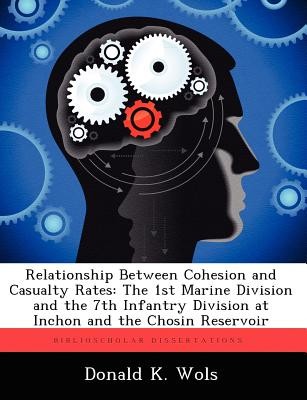
- We will send in 10–14 business days.
- Author: Donald K Wols
- Publisher: BiblioScholar
- ISBN-10: 1249285585
- ISBN-13: 9781249285588
- Format: 18.9 x 24.6 x 0.7 cm, softcover
- Language: English
- SAVE -10% with code: EXTRA
Reviews
Description
The 1st Marine and 7th Infantry Divisions fought two campaigns in Korea between September and December 1950. These divisions' levels of unit cohesion prior to and during their employment affected the number of men who became casualties during the three and one-half months of combat. Casualty rates can be affected by friendly-enemy force ratios and tactical advantages, but this historical analysis shows that units opposing similar enemies in similar tactical situations still have markedly different casualty rates that are not attributable to enemy numbers and disposition. Programs such as the Selective Service and the Korean Augmentation to the United States Army (KATUSA), originally designed to help combat units, ultimately destroyed any hope for cohesion that the 7th Infantry Division might have had. Comparing the performances of the 1st Marine Division and the 7th Infantry Division, after highlighting the myriad of circumstances impacting those performances, defines a relationship between their levels of cohesion and the numbers of casualties they suffered. It is clear that the 1st Marine Division was more cohesive than the 7th Infantry Division and suffered fewer casualties as a result.
EXTRA 10 % discount with code: EXTRA
The promotion ends in 18d.15:08:51
The discount code is valid when purchasing from 10 €. Discounts do not stack.
- Author: Donald K Wols
- Publisher: BiblioScholar
- ISBN-10: 1249285585
- ISBN-13: 9781249285588
- Format: 18.9 x 24.6 x 0.7 cm, softcover
- Language: English English
The 1st Marine and 7th Infantry Divisions fought two campaigns in Korea between September and December 1950. These divisions' levels of unit cohesion prior to and during their employment affected the number of men who became casualties during the three and one-half months of combat. Casualty rates can be affected by friendly-enemy force ratios and tactical advantages, but this historical analysis shows that units opposing similar enemies in similar tactical situations still have markedly different casualty rates that are not attributable to enemy numbers and disposition. Programs such as the Selective Service and the Korean Augmentation to the United States Army (KATUSA), originally designed to help combat units, ultimately destroyed any hope for cohesion that the 7th Infantry Division might have had. Comparing the performances of the 1st Marine Division and the 7th Infantry Division, after highlighting the myriad of circumstances impacting those performances, defines a relationship between their levels of cohesion and the numbers of casualties they suffered. It is clear that the 1st Marine Division was more cohesive than the 7th Infantry Division and suffered fewer casualties as a result.


Reviews